Once home to two queens and formerly an innovative diabetes hospital—a salvo in the battle between two of Denmark’s fiercest commercial rivals (Novo and Nordisk…yeah, they used to be separate companies!)—Hvidøre is about as storied as a corporate conference center can be. Plus, a defunct tram line!
Built in 1872 and designed by architect Johan Schrøder in a Historicist style, Hvidøre started out as a country house for Danish statesman F.C. Bruun…and that is probably the least interesting thing about it. In 1906, Queen Alexandra of Britain and Dowager Empress Dagmar of Russia—the daughters of King Christian IX of Denmark—bought Hvidøre. The two queens intended the country estate in Klampenborg to serve as a shared summer house during their frequent trips to their home country. Empress Dagmar, Maria Feodorovna, ended up spending a lot more time here than she envisioned after the Bolsheviks overthrew and executed her son, Tsar Nikolai II.
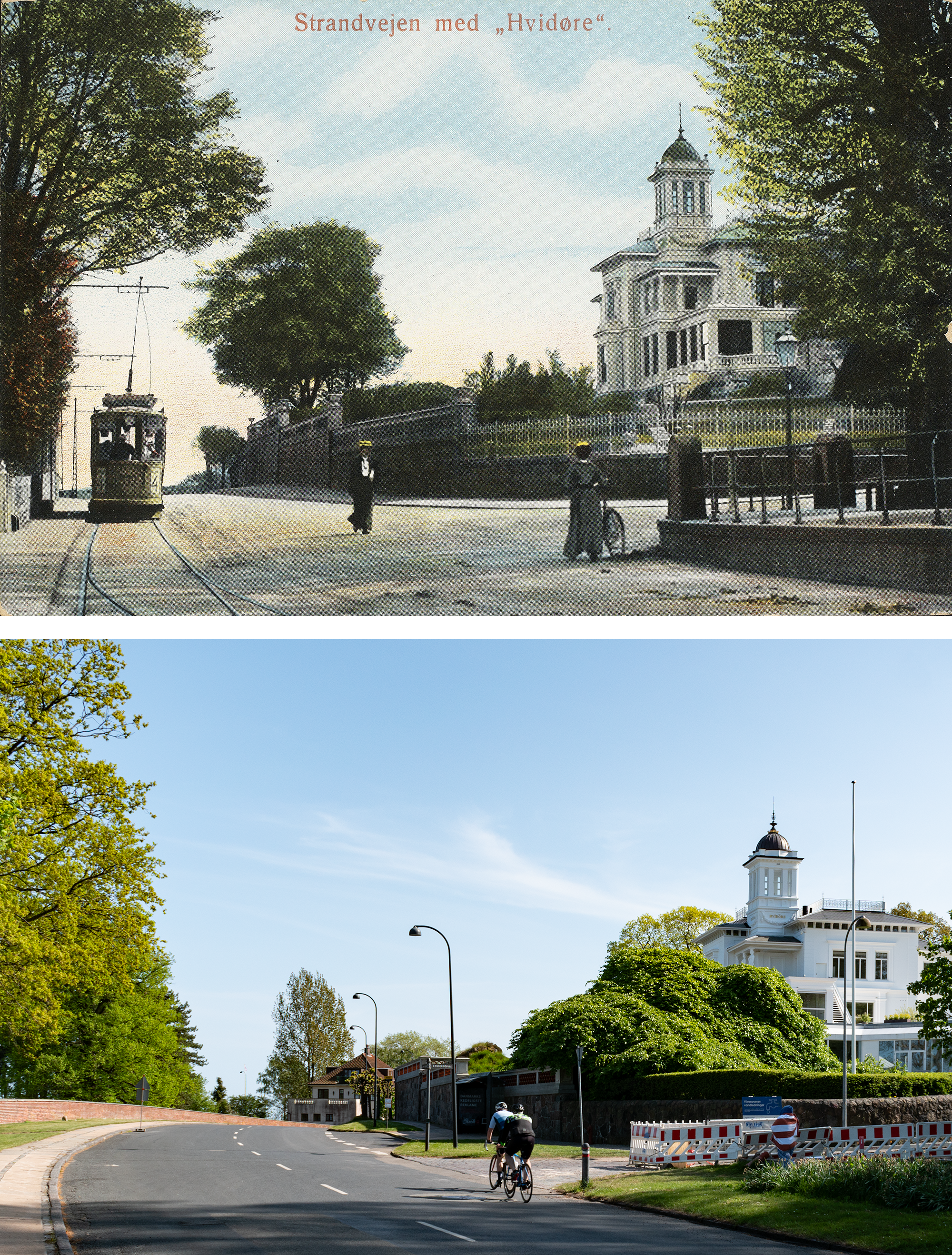
So, what’s changed? Obviously the catenary wires for the Tuborg-Klampenborg Elektriske Sporvej were torn down. Originally running as the 4, then as the 14, the Nordsjællands Elektricitets og Sporvejs Aktieselskab abandoned their tracks on Strandvejen in 1951—the entire line north from Copenhagen to Klampenborg converted to bus service in 1965. The villa in the background, now the embassy of Bangladesh, was built in 1920. In the foreground, the concrete corner of Emiliekildevej and Strandvejen returned to grass sometime after the 1940s.
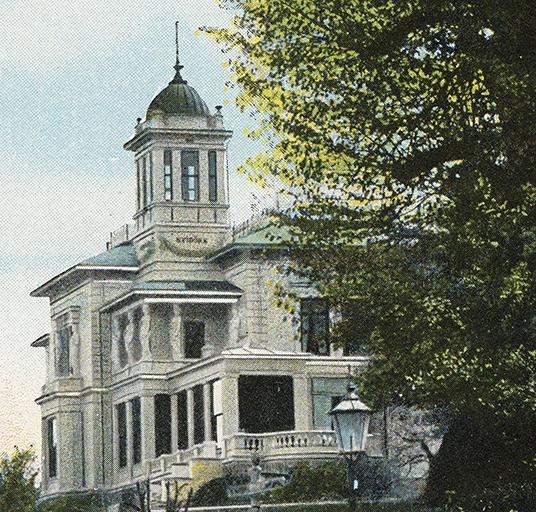
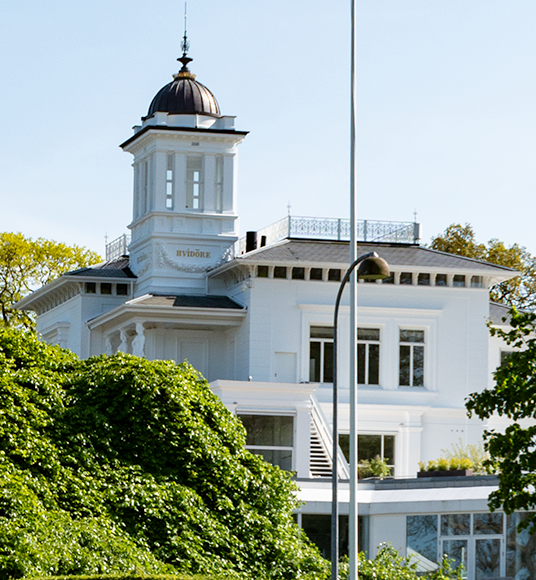
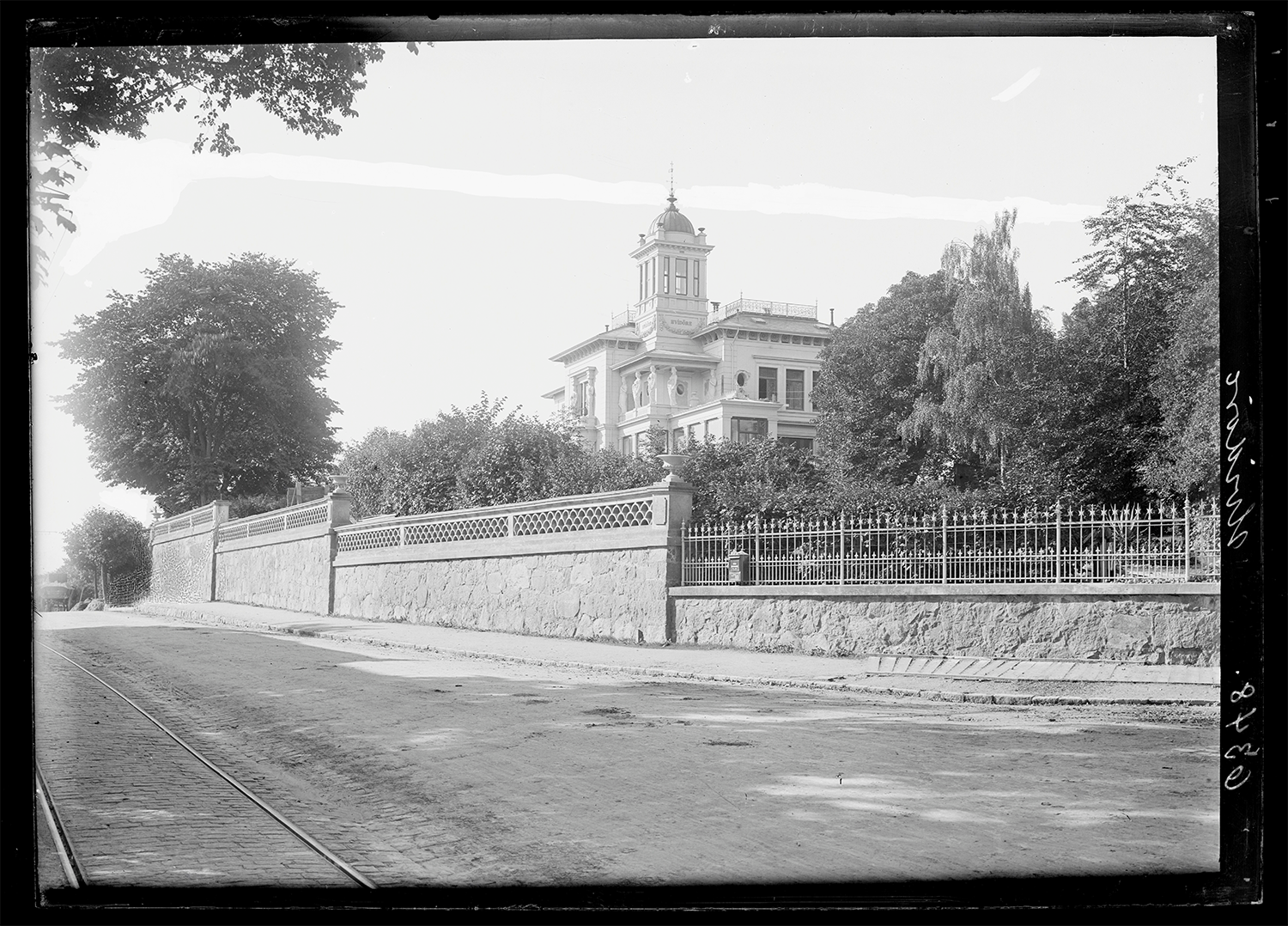
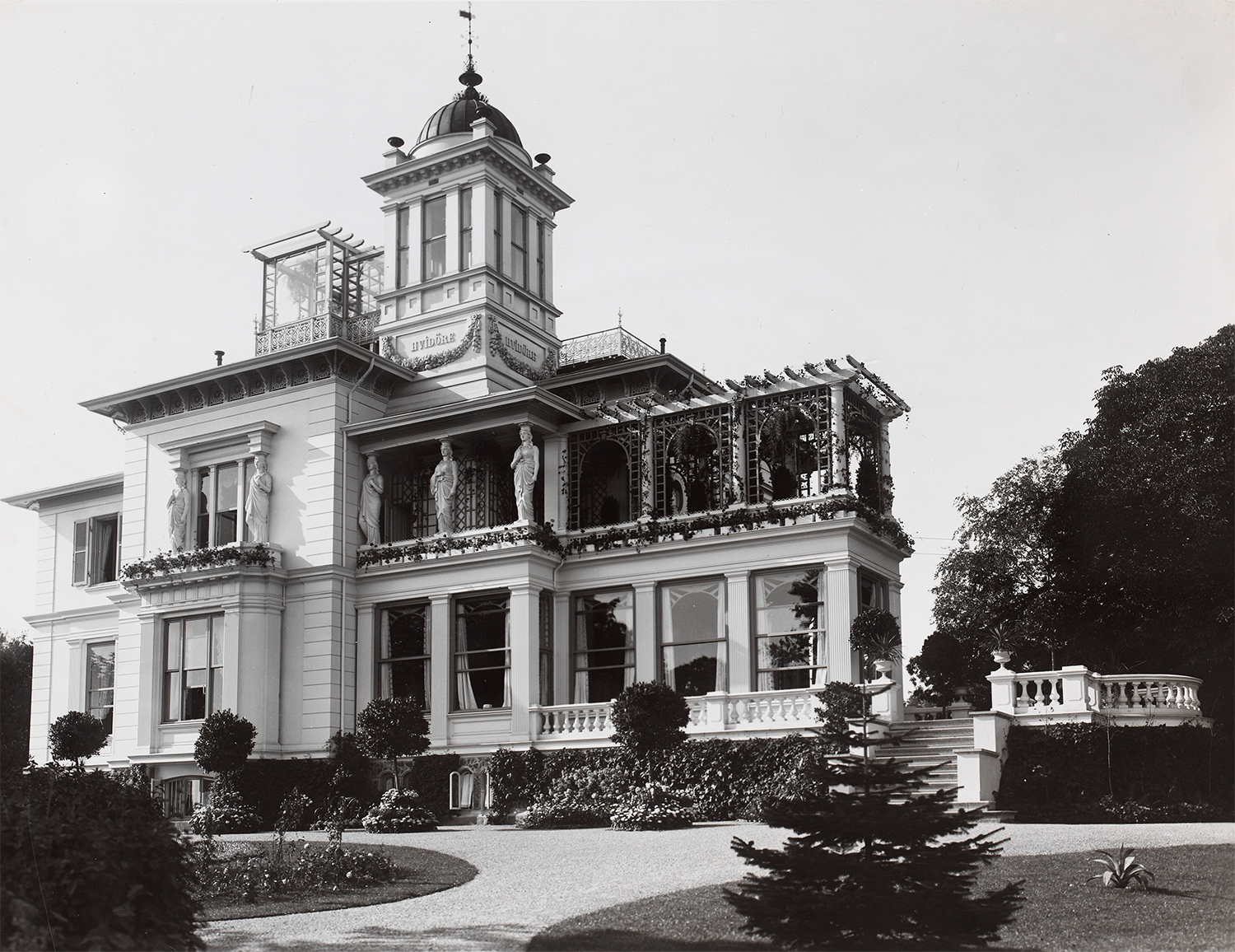
Caryatid closeup, ~1905 postcard | Caryatid closeup, 2023 photo | 1906, Lars Peter Elfelt, Det Kgl. Bibliotek | Undated, Det Kgl. Bibliotek
Hvidøre itself looks similar, but there are a few changes—if you look closely the upper balcony lost two of its caryatids. Sculpted by Otto Evens, they were removed during renovations commissioned by the Queens after they bought the house in 1906. Below that, you can spot the large windows of Dissing + Weitling’s addition, completed in 1980.
Wealthy Danish diplomat Frederik Christian Bruun hired architect Johan Schrøder to design him a country house in Klampenborg overlooking the Øresund. Schrøder was an understandable hire—he designed a bunch of historicist villas, single family homes, and apartment buildings, alongside the occasional factory or commercial building. To name his new estate, Bruun borrowed the name of a royal residence that once stood nearby.
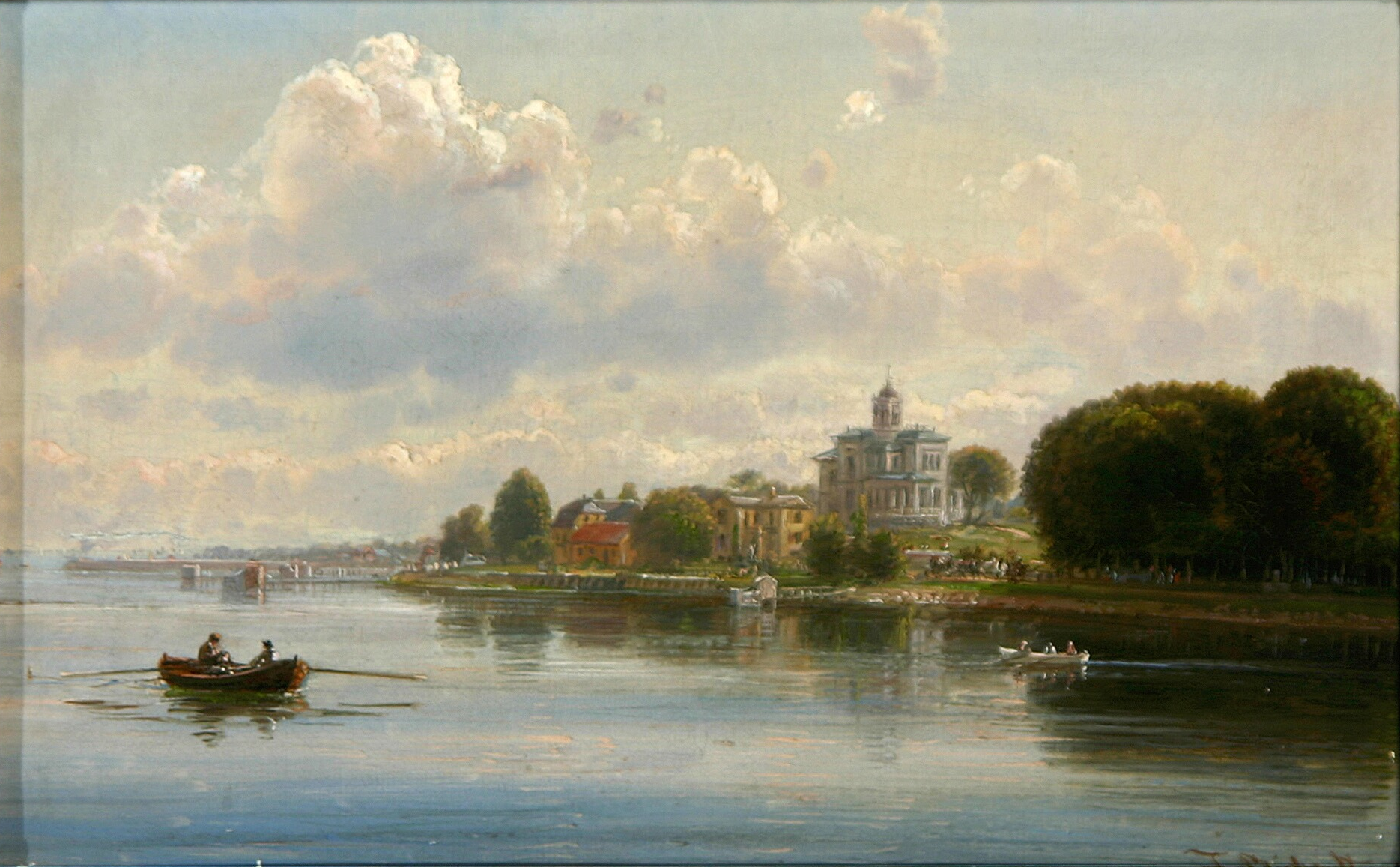
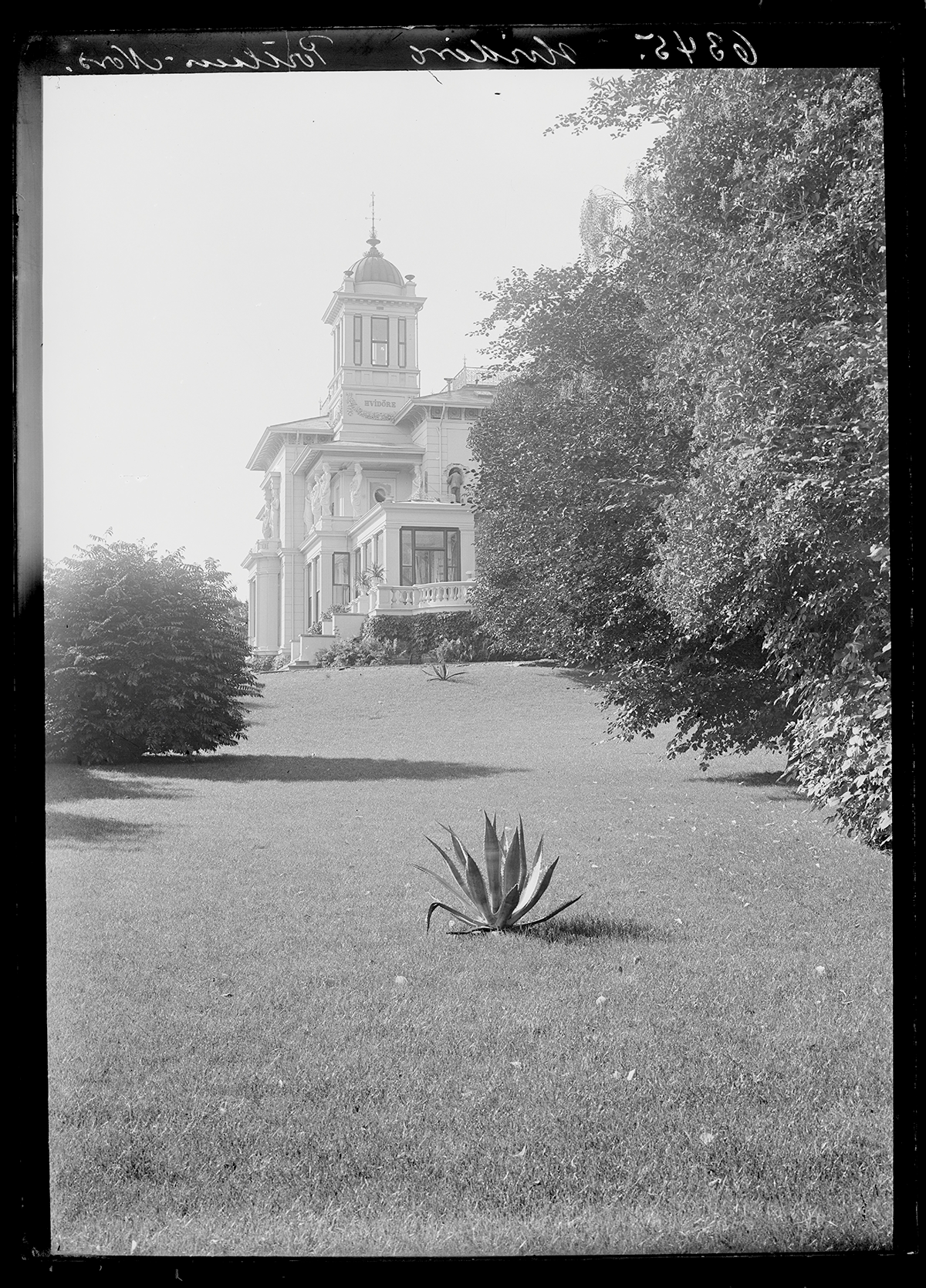
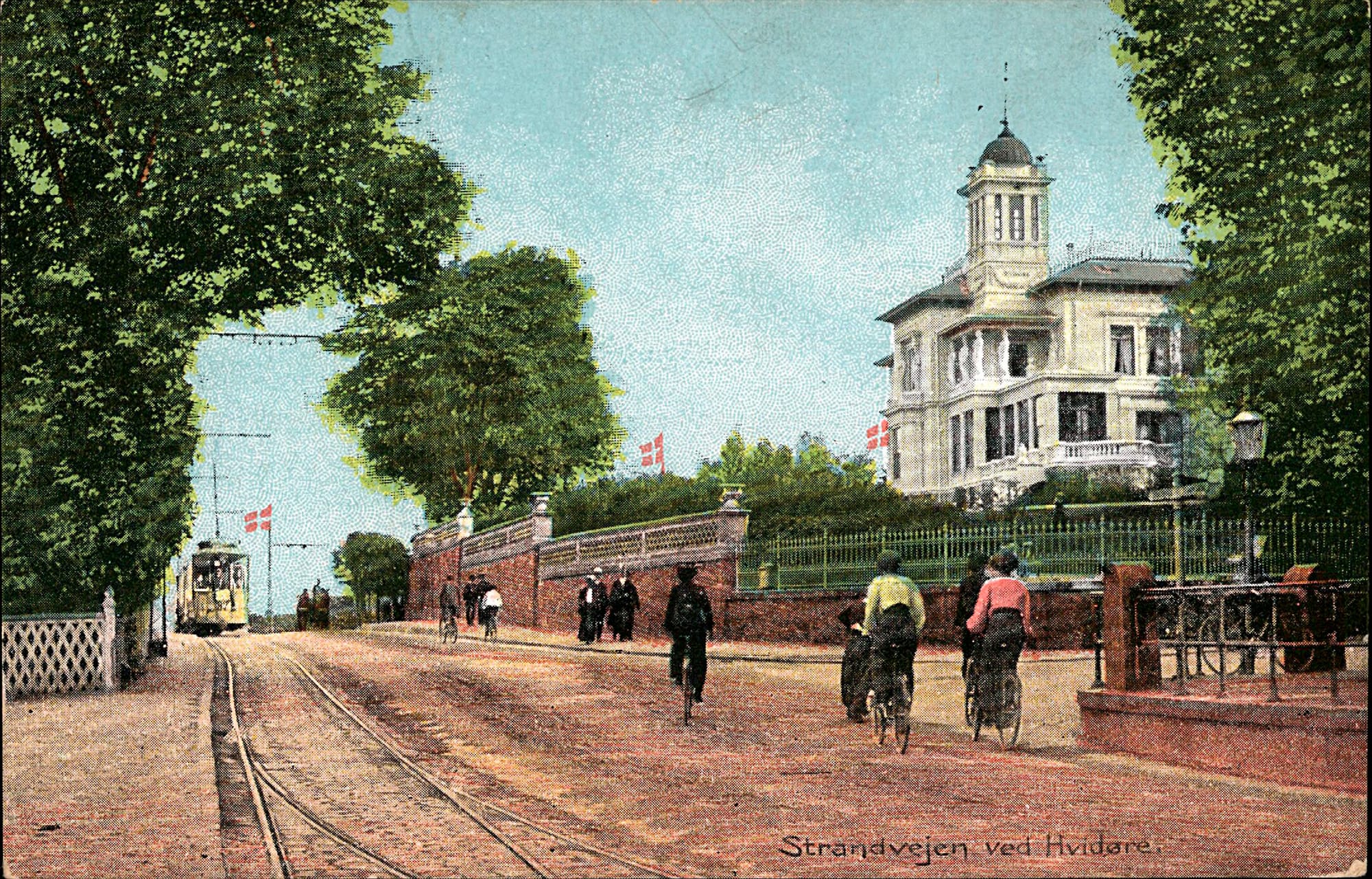
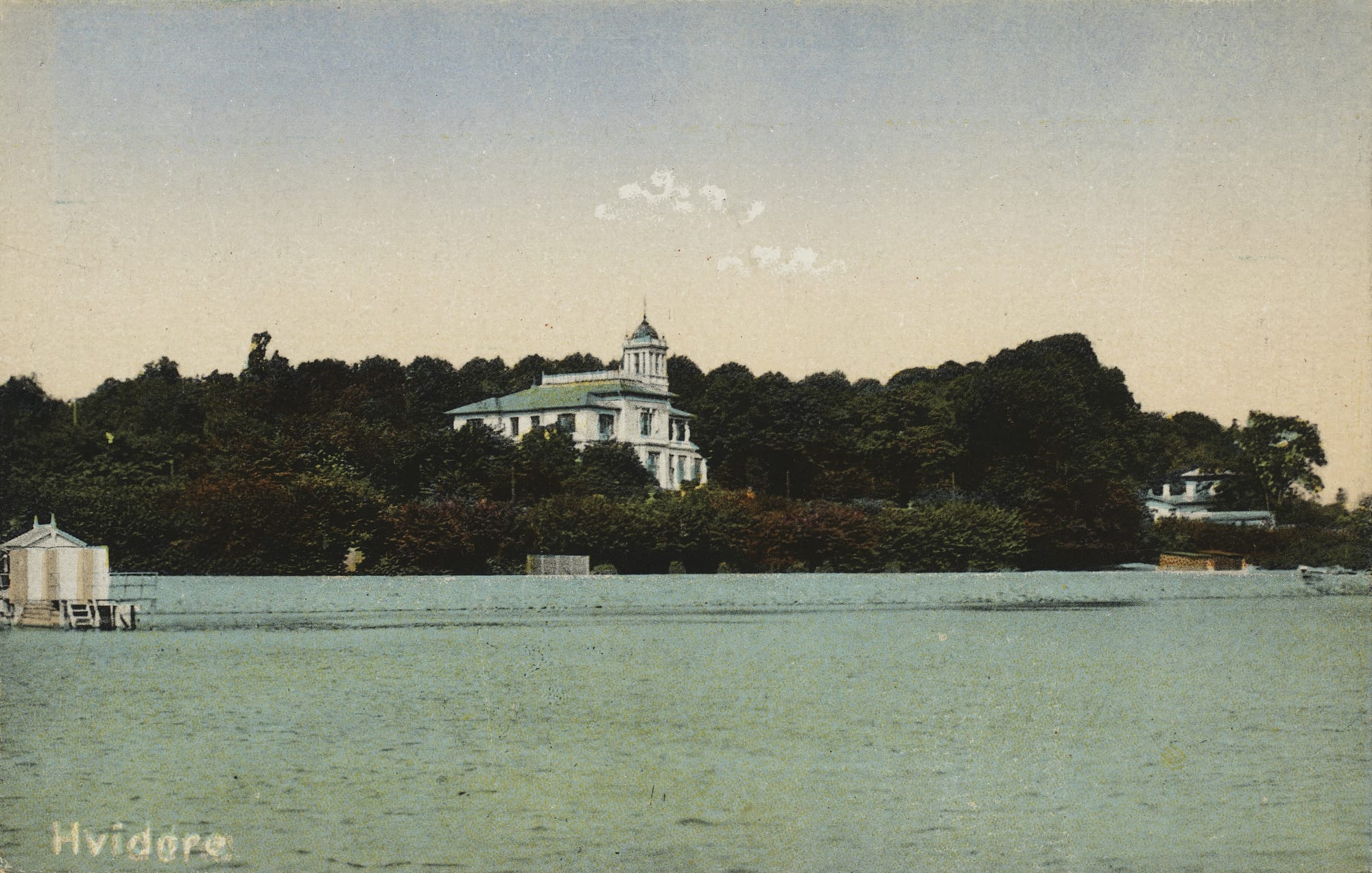
Ferdinand Richardt painting, 1872, Wikimedia Commons | 1906, Lars Peter Elfelt, Det Kgl. Bibliotek | Pre-1906 postcard, Det Kgl. Bibliotek | Postcard, Europeana
The queens, Dagmar and Alexandra, bought Hvidøre for 280,000 kroner in 1906. Dagmar was by this point the Dowager Empress of Russia after her husband, Tsar Alexander III, died in 1894, but Alexandra was the reigning Queen Consort of the United Kingdom, the wife of Edward VIII. Their father, King Christian XIII, had just died and their brother ascended to the throne of Denmark, and so the sisters bought Hvidøre and hired an aged Johan Schrøder back to remodel. Most visibly, Schrøder added multiple pergolas. For more than a decade, Hvidøre served as their base for their long stays in Denmark visiting friends and family. Empress Dagmar—Maria Feodorovna—would end up spending more time at Hvidøre than she ever imagined.
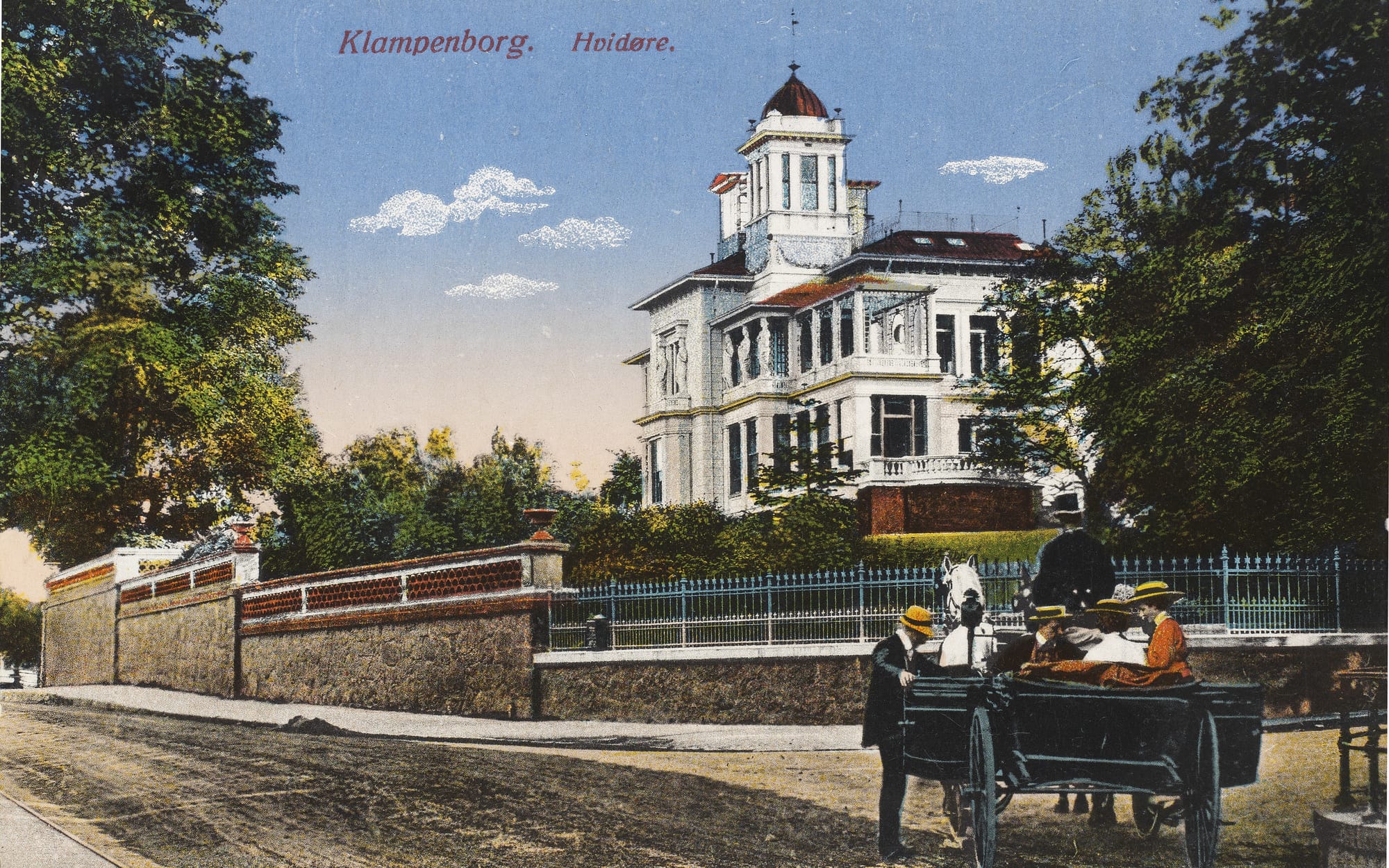

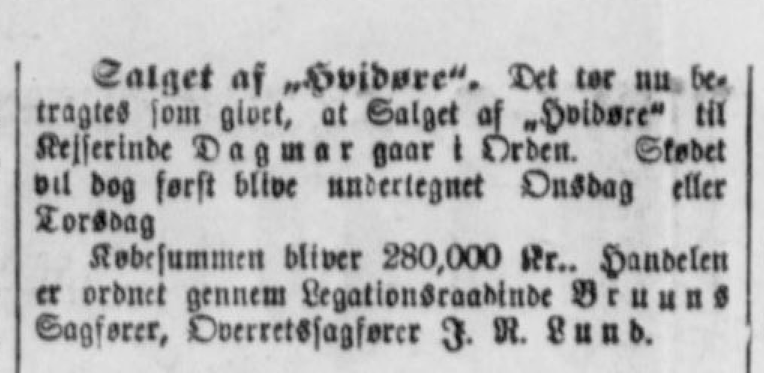


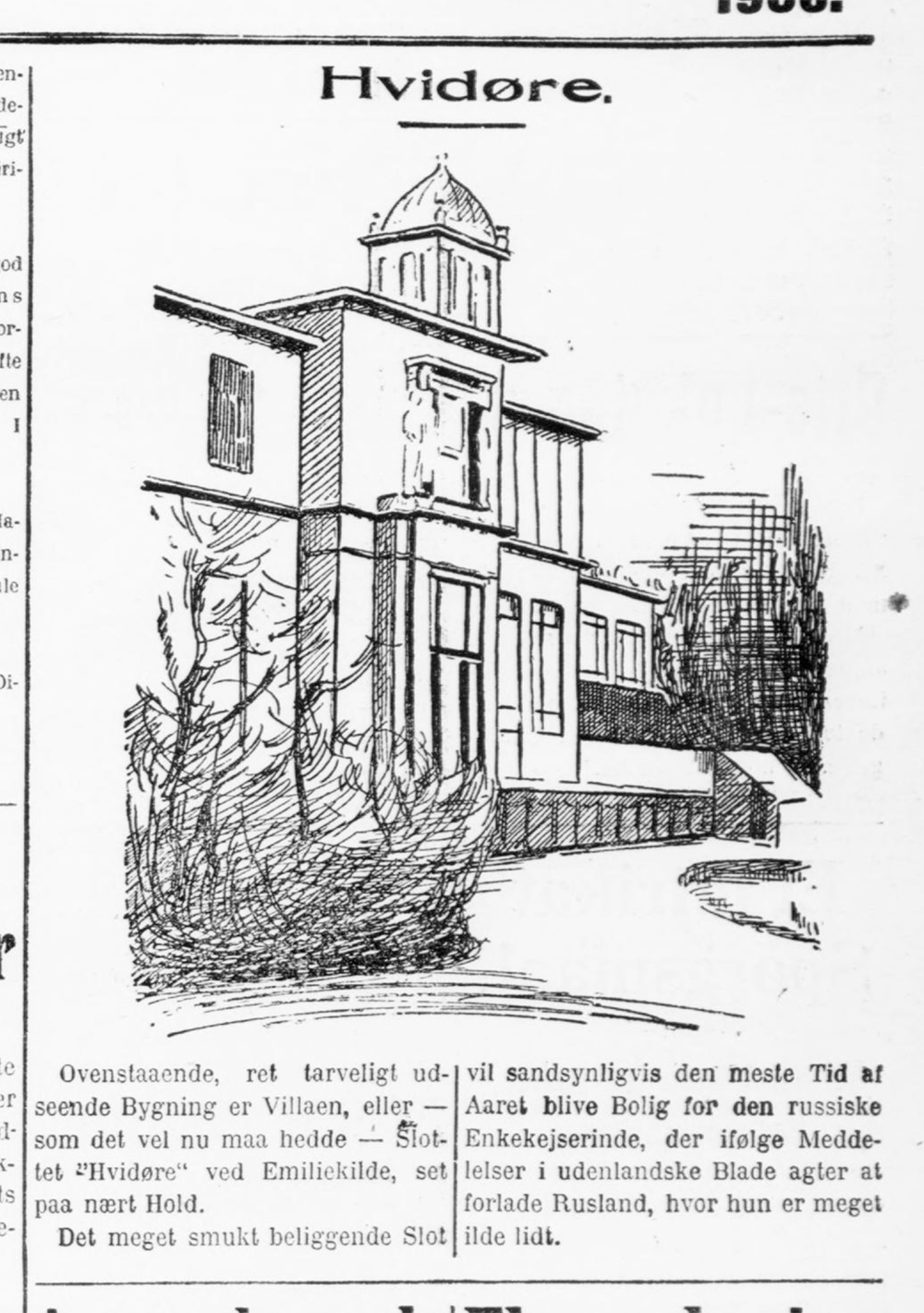
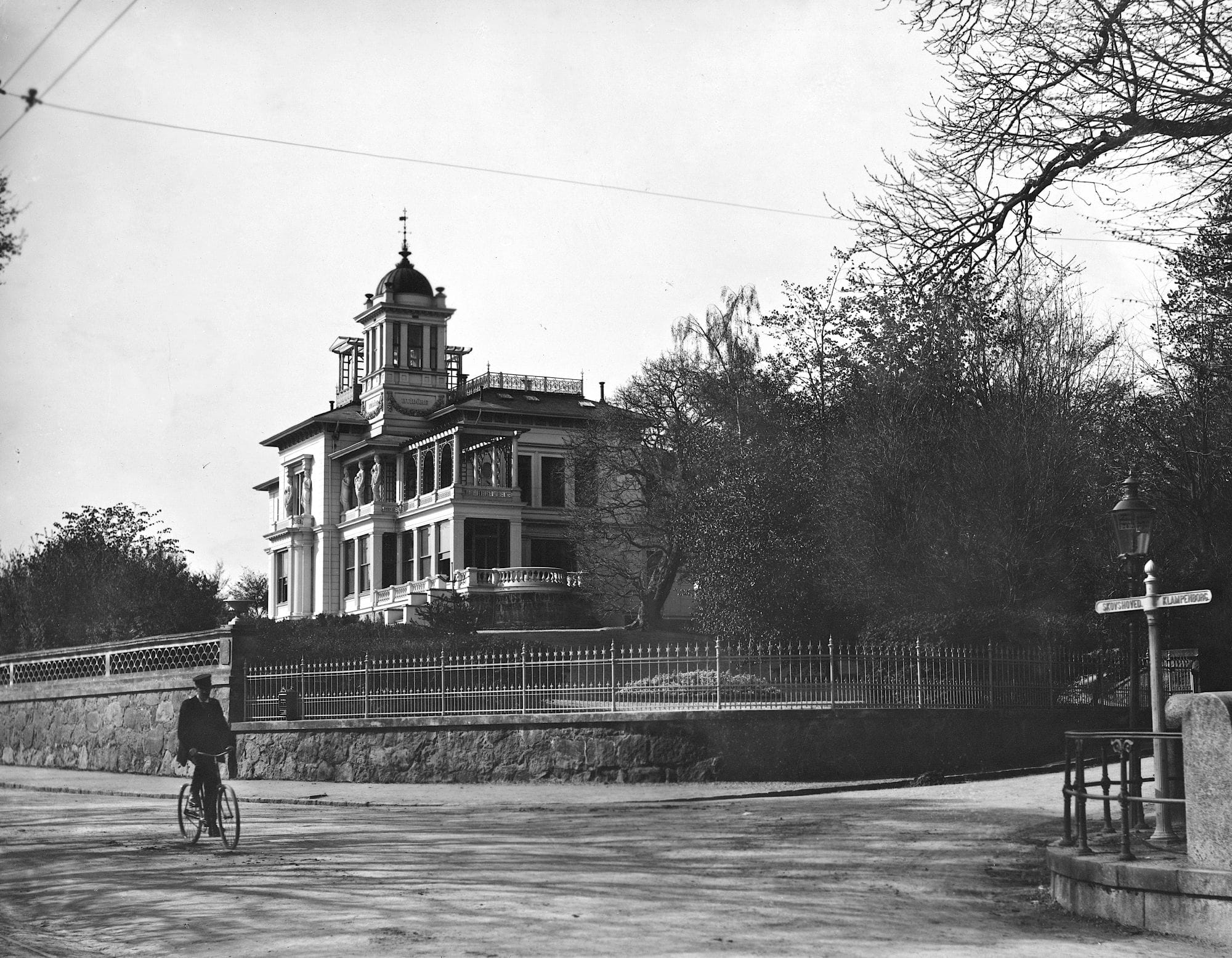
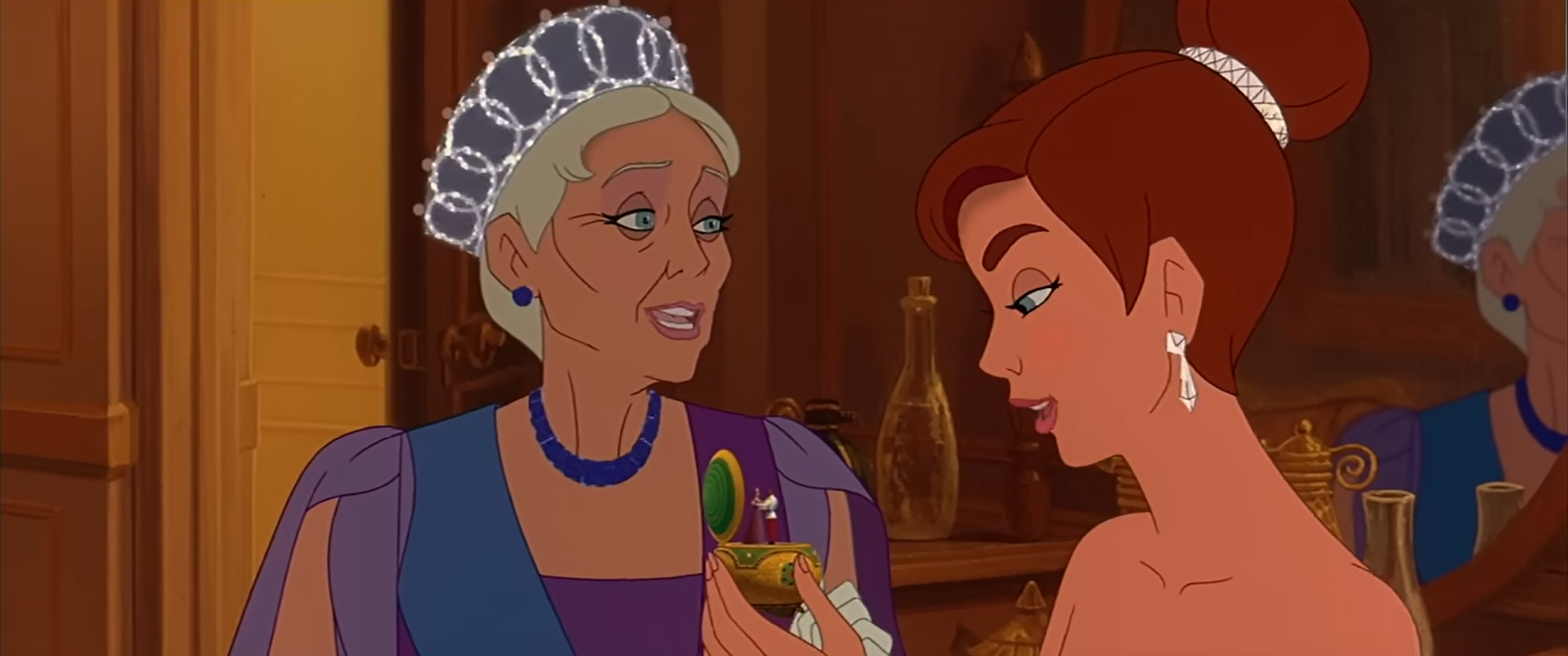
Post-1906 postcard with horsecart, Europeana | Postcard with snow, Det Kgl. Bibliotek | 1906 articles about the two queens purchasing and renovating Hvidøre | Undated, Vilhelm Tryde, the Museum of Copenhagen | Dowager Empress Maria Feodorovna in Anastasia (1997)
After the overthrow of the Russian monarchy in 1917, Maria Feodorovna initially refused to flee. She lingered in Crimea for more than a year with some other refugee Romanovs—presumably both too impotent and too connected for the Bolsheviks to really bother with—before finally leaving for the UK in 1919. She eventually moved into Hvidøre as her permanent home in 1923, and she would die here in 1928. Americans might best know her as the grandmother in the 1997 animated film Anastasia.
F.C. Bruun’s eccentric daughter—heiress Musse Scheel—briefly acquired her childhood home in 1932, but the next real major change came with Hvidøre’s purchase by Novo Industries in 1937. Novo was Denmark’s second major insulin manufacturer, founded by two employees fired from the first—Nordisk Insulinlaboratorium—and Novo intended to convert Hvidøre into a one-of-a-kind diabetes hospital. They were following their rival’s lead—in 1932 Nordisk had established Niels Steensens Diabetes Hospital, the first hospital in Denmark specifically focused on diabetes treatment.
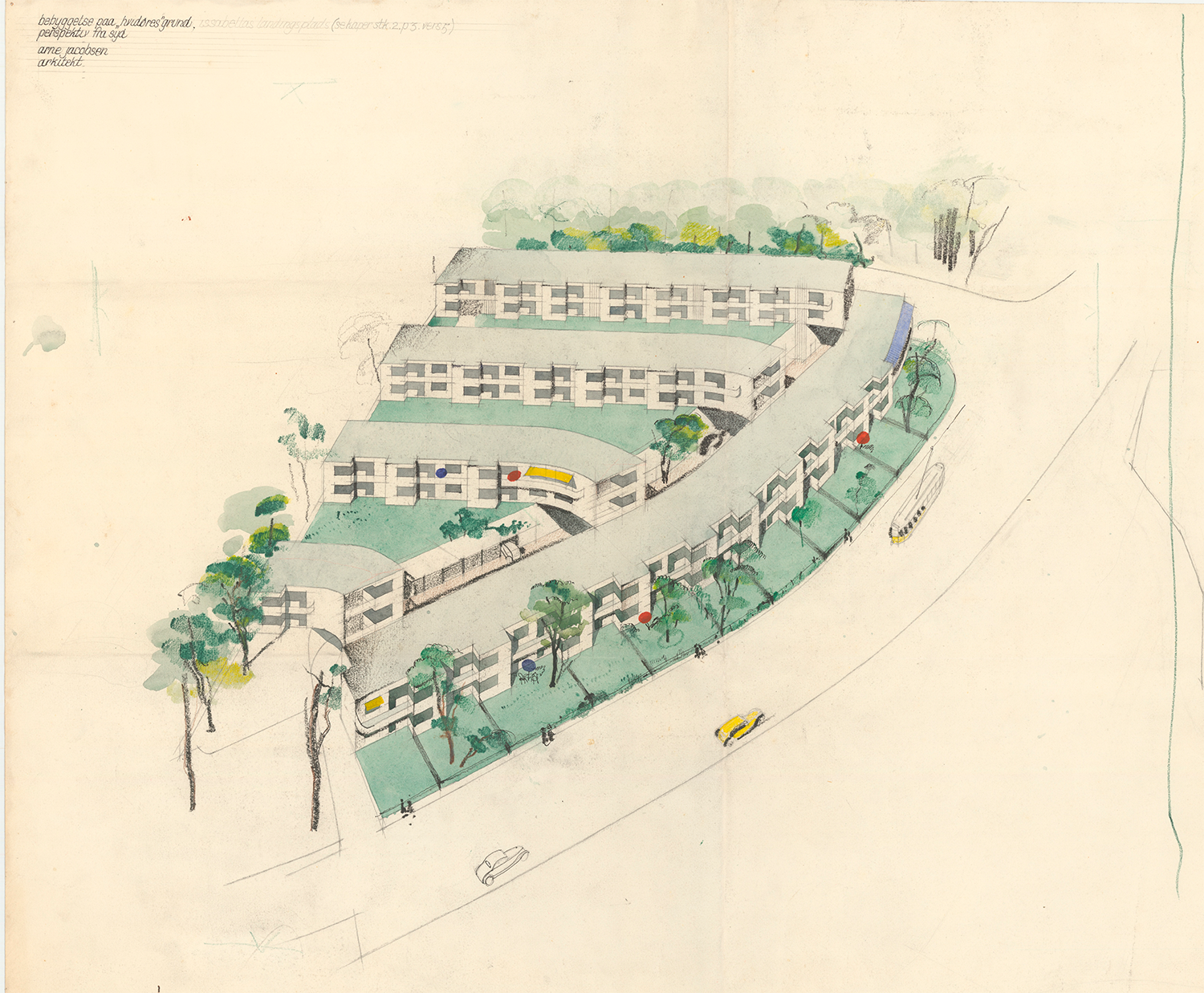
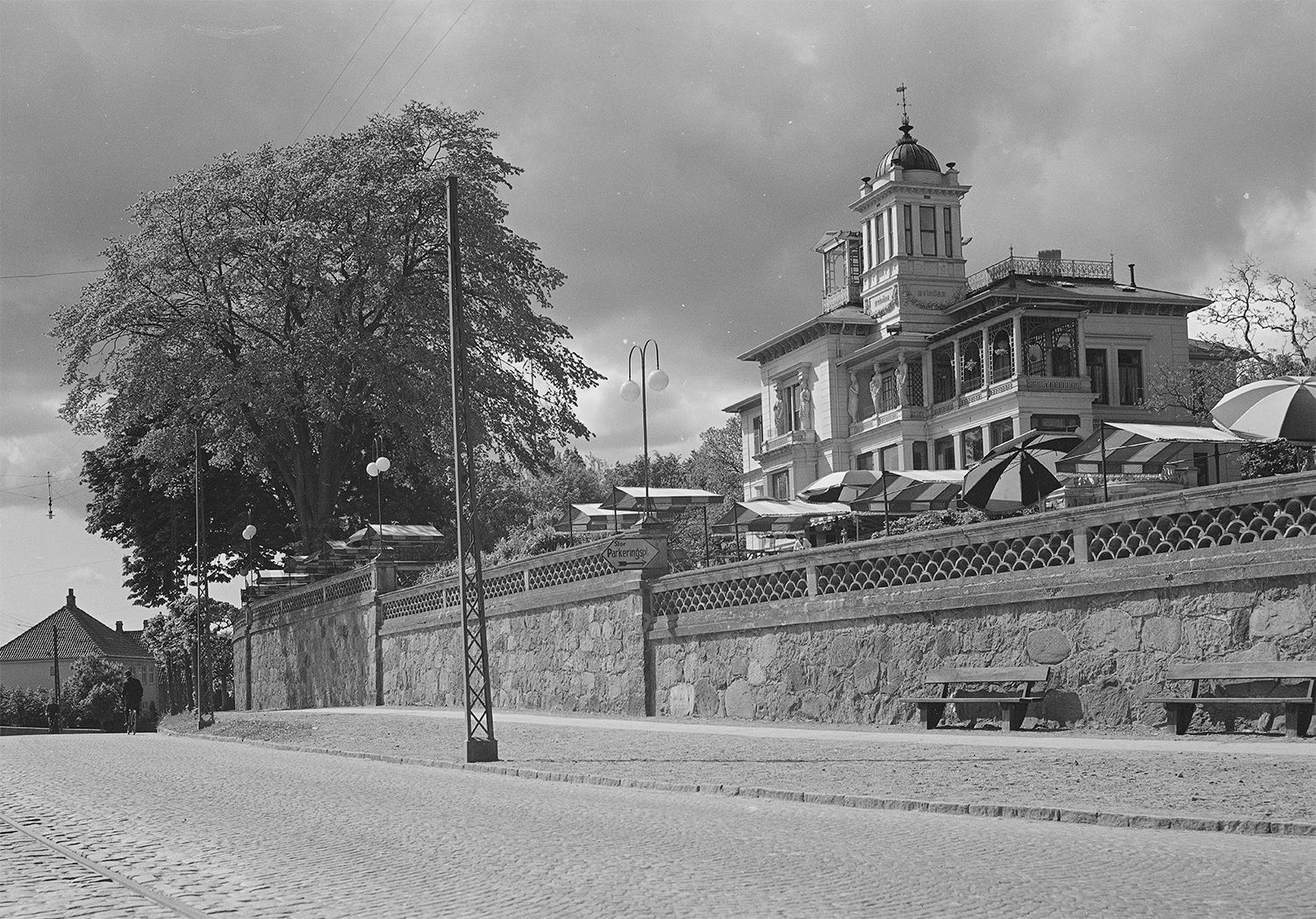
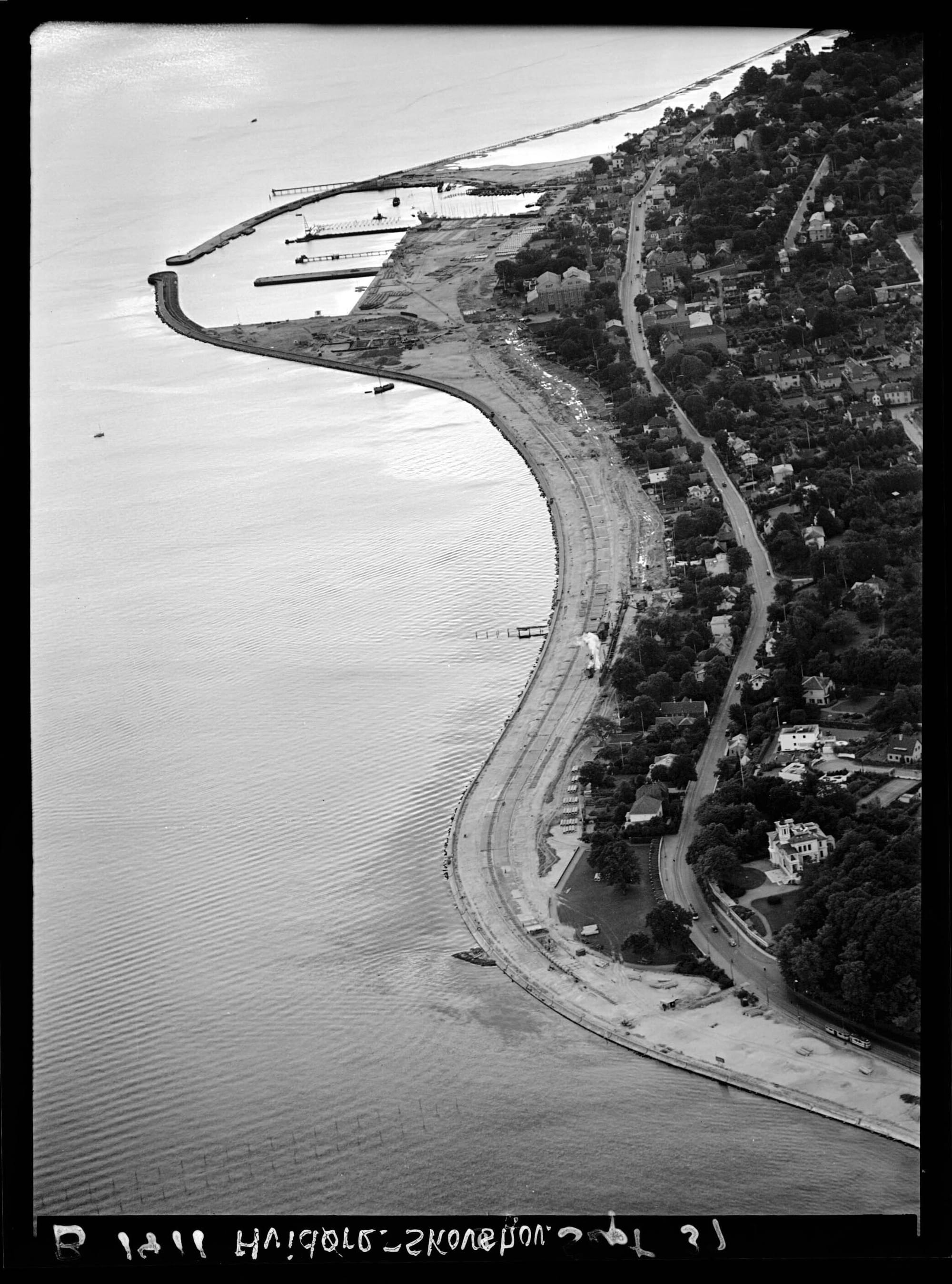
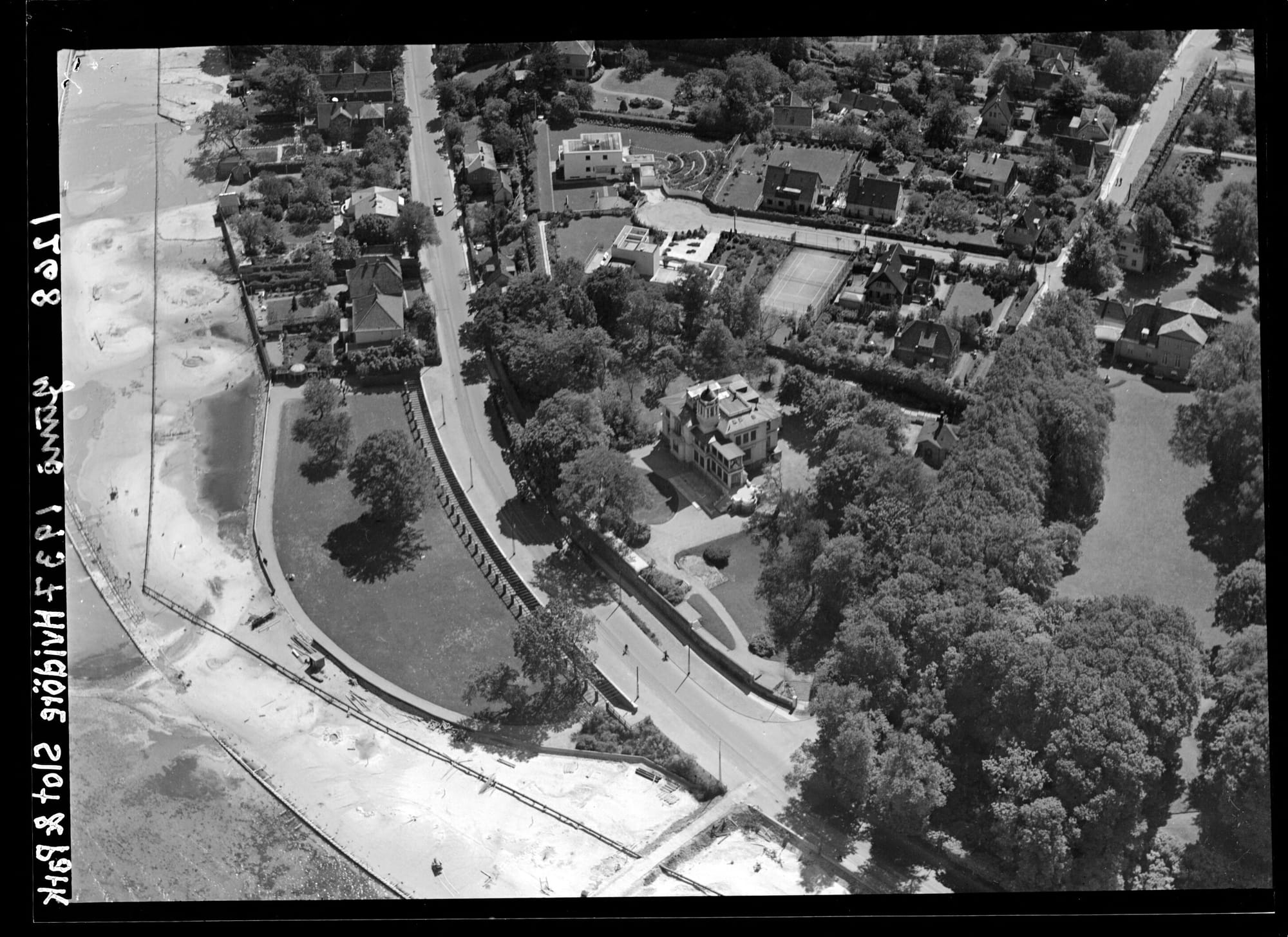
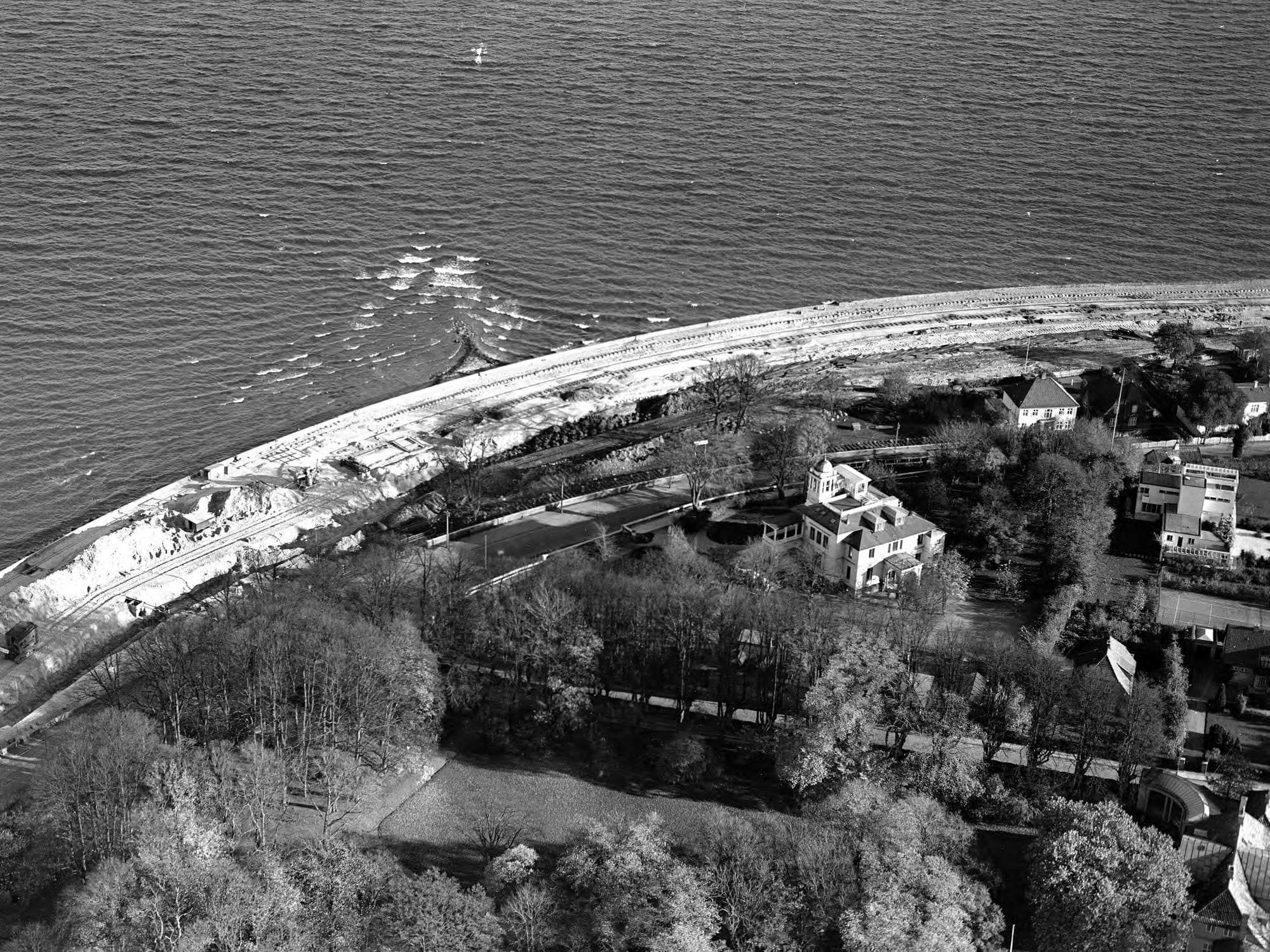
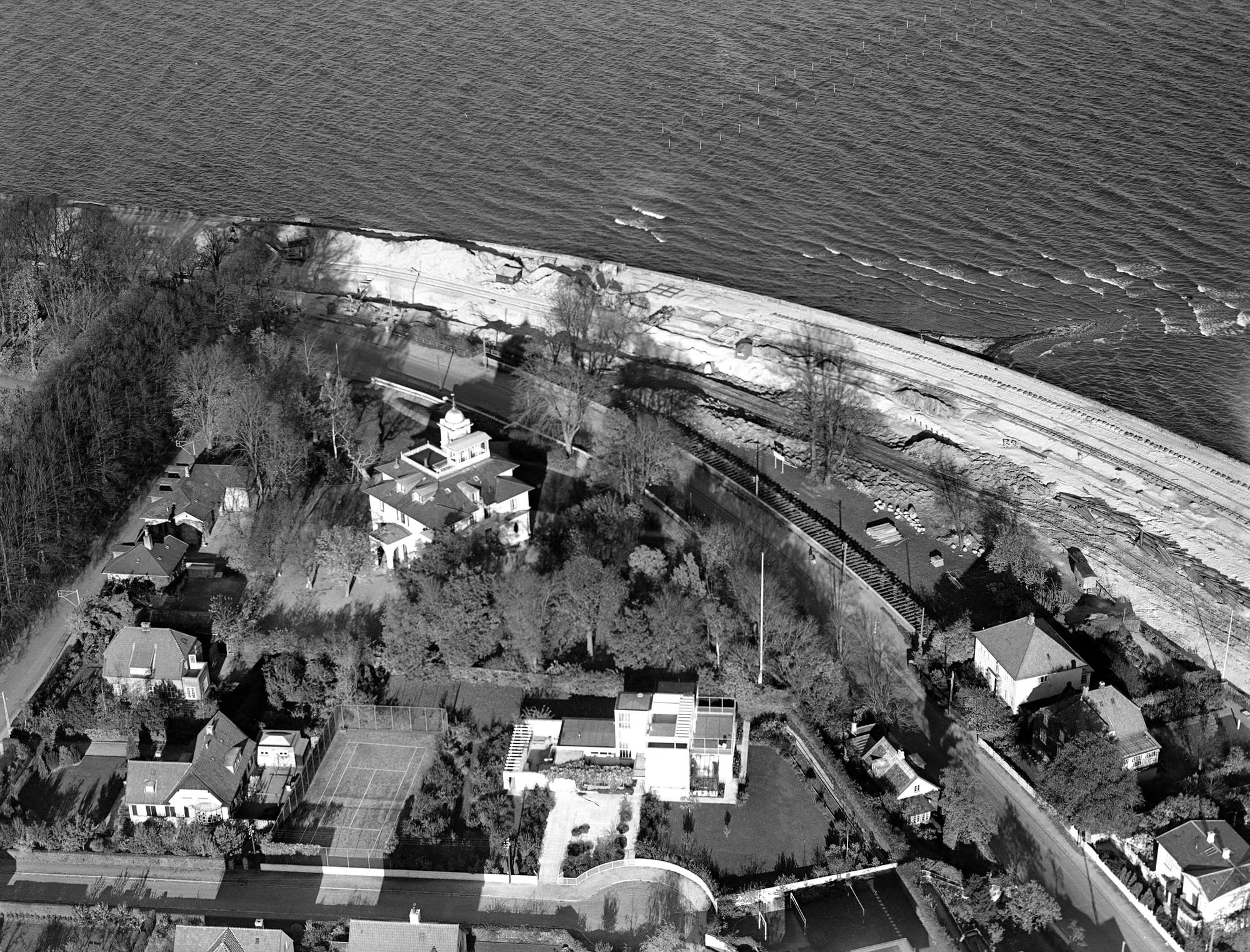
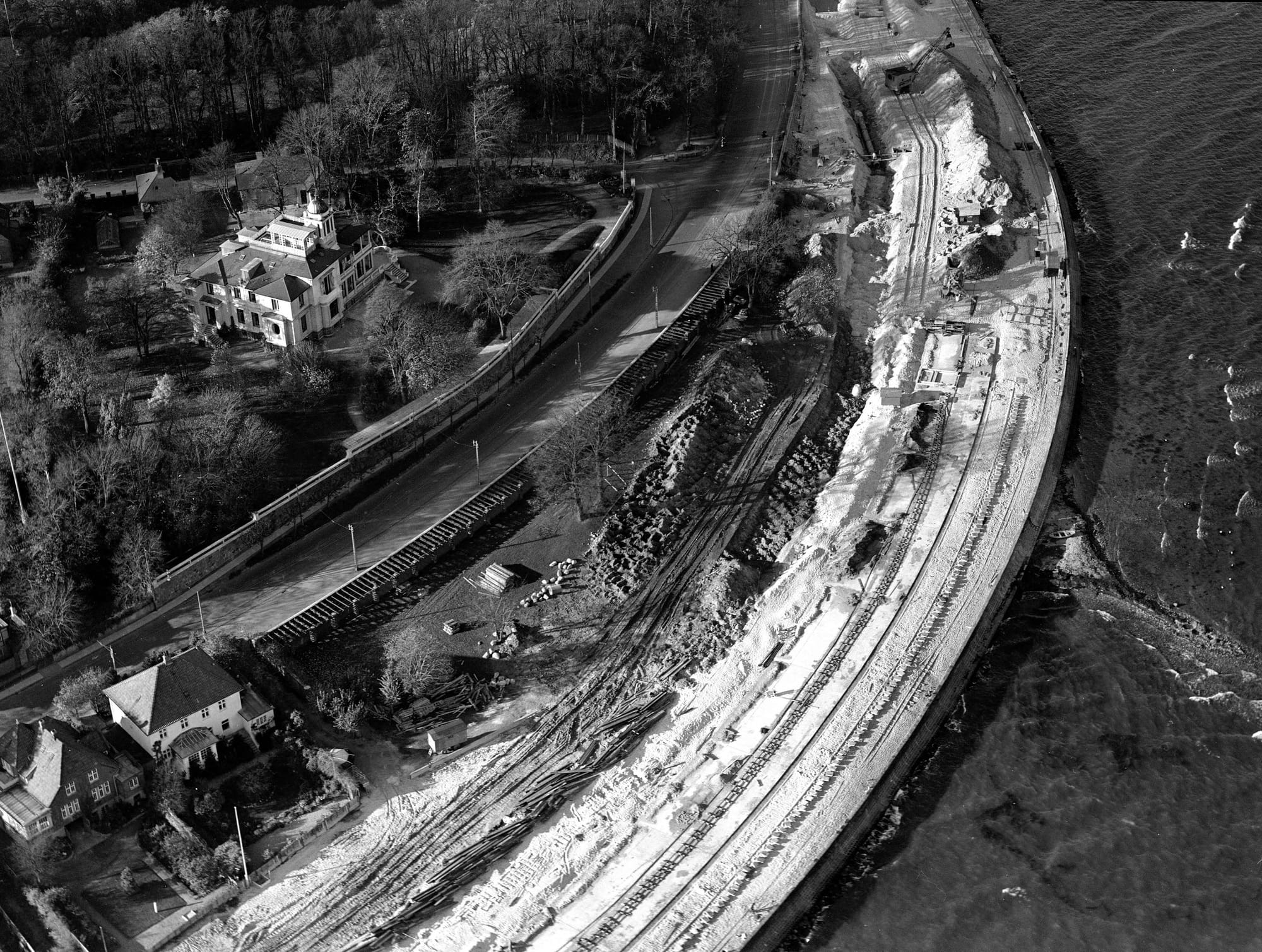
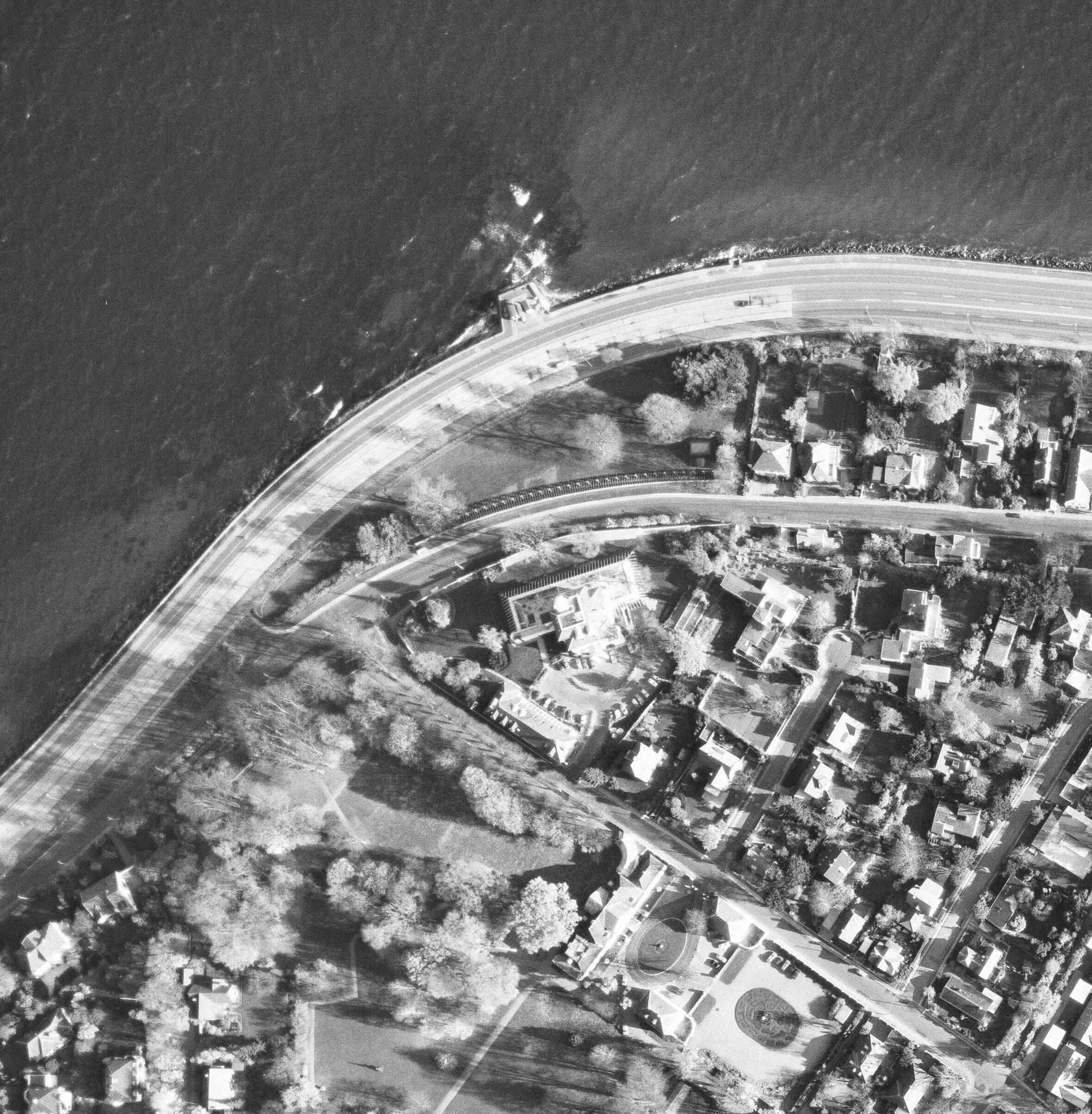
Unbuilt Arne Jacobsen proposal for a new diabetes hospital, Det Kgl. Bibliotek | Undated, Jonals Co., Det Kgl. Bibliotek | 1937, 1940s, 1983 aerials, Danmark Set Fra Luften, Det Kgl. Bibliotek
Novo took a somewhat different approach to Nordisk’s rigidly clinical hospital—Hvidøre Diabetiker Sanatorium would be a homelike idyll on the waterfront, featuring holistic treatment that taught ~25 patients at a time how to manage their diabetes in daily life. Novo hired famed architect Arne Jacobsen to convert Hvidøre into a modern healthcare center—Jacobsen considered demolishing and replacing the villa before deciding to update and remodel its interiors and grounds instead.
After more than 60 years of intense competition, Novo and Nordisk merged in 1989. Their diabetes hospitals, whose clinical rivalry advanced diabetes care in the same way their patron companies pushed forward insulin production, would combine a couple years later—Hvidøre and Niels Steensens Hospital consolidated into the Steno Diabetes Center in 1992 and moved to Herlev. Novo Nordisk converted the vacant country house into a conference and corporate training center—how many other companies can say an empress died in their conference center?
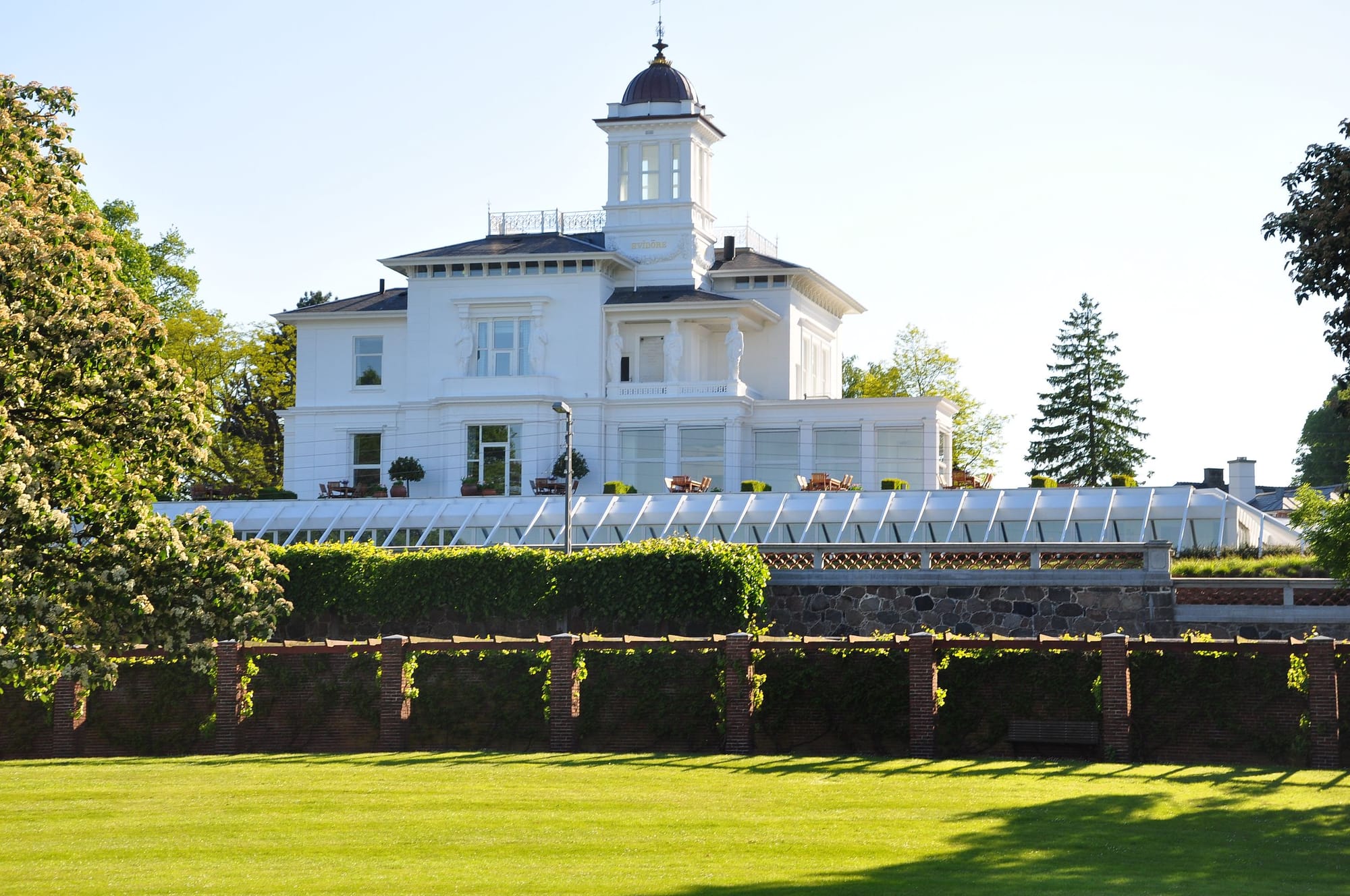

2009, Wikimedia Commons | 2011, Wikimedia Commons
Production Files
Further reading:
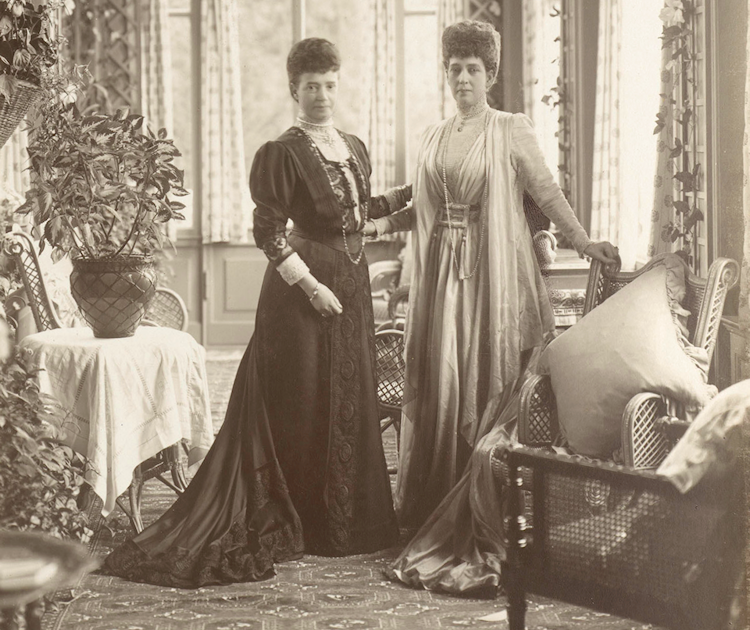

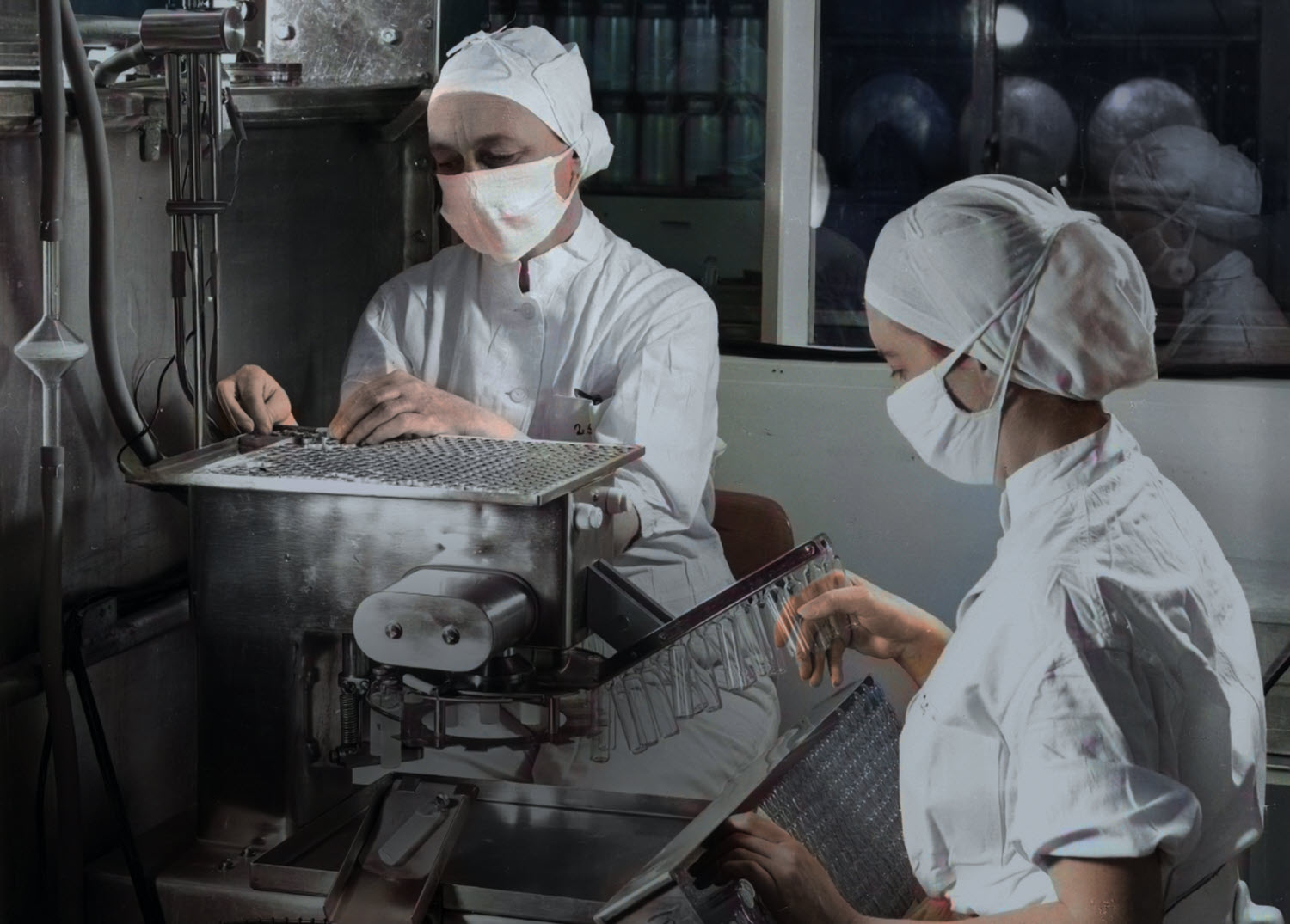
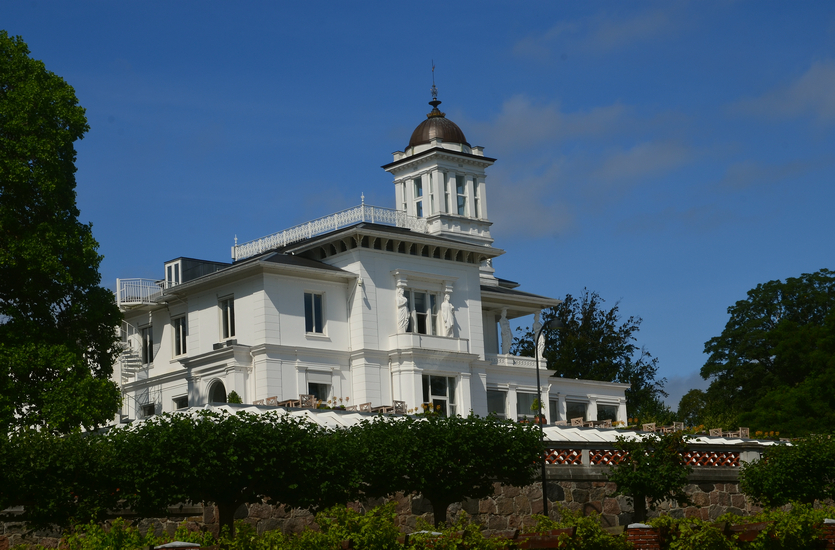
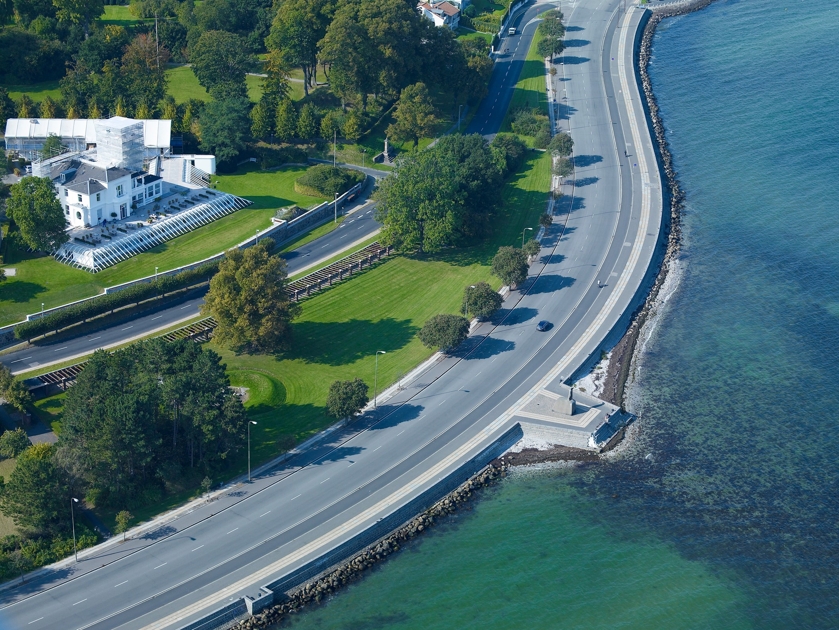


I was pretty thrilled with this: Russian photographer Sergey Prokudin-Gorsky, who took all these incredible color photographs of the people and places of the Russian Empire in the early 1910s, took this photo from Hvidøre—where he was presumably visiting the Dowager Empress of Russia—in 1908.
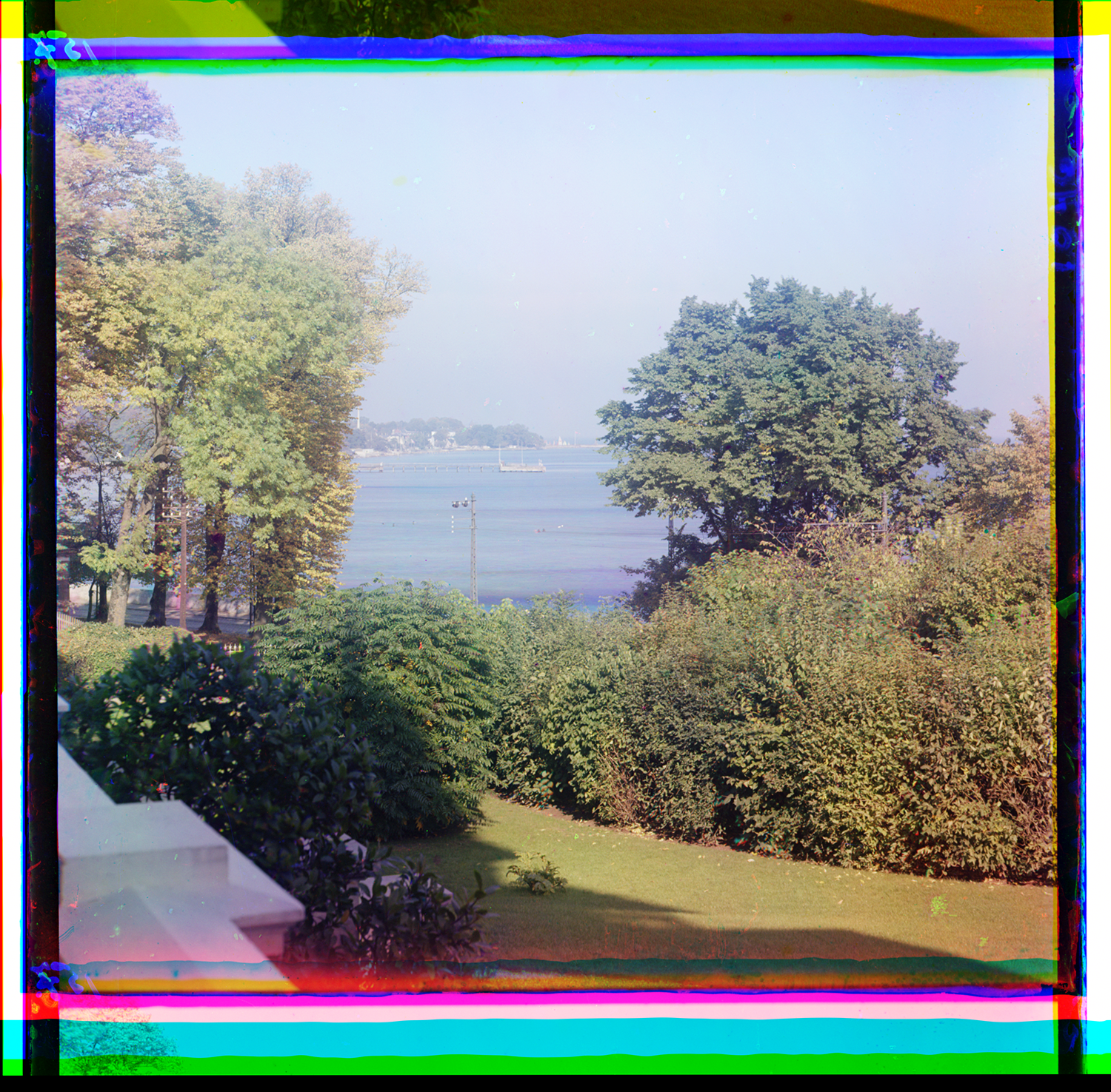
Because of its high-profile residents, Hvidøre was regularly in the news—in the 1920s, there was lots of speculation about what the Dowager Empress was going to do with it.

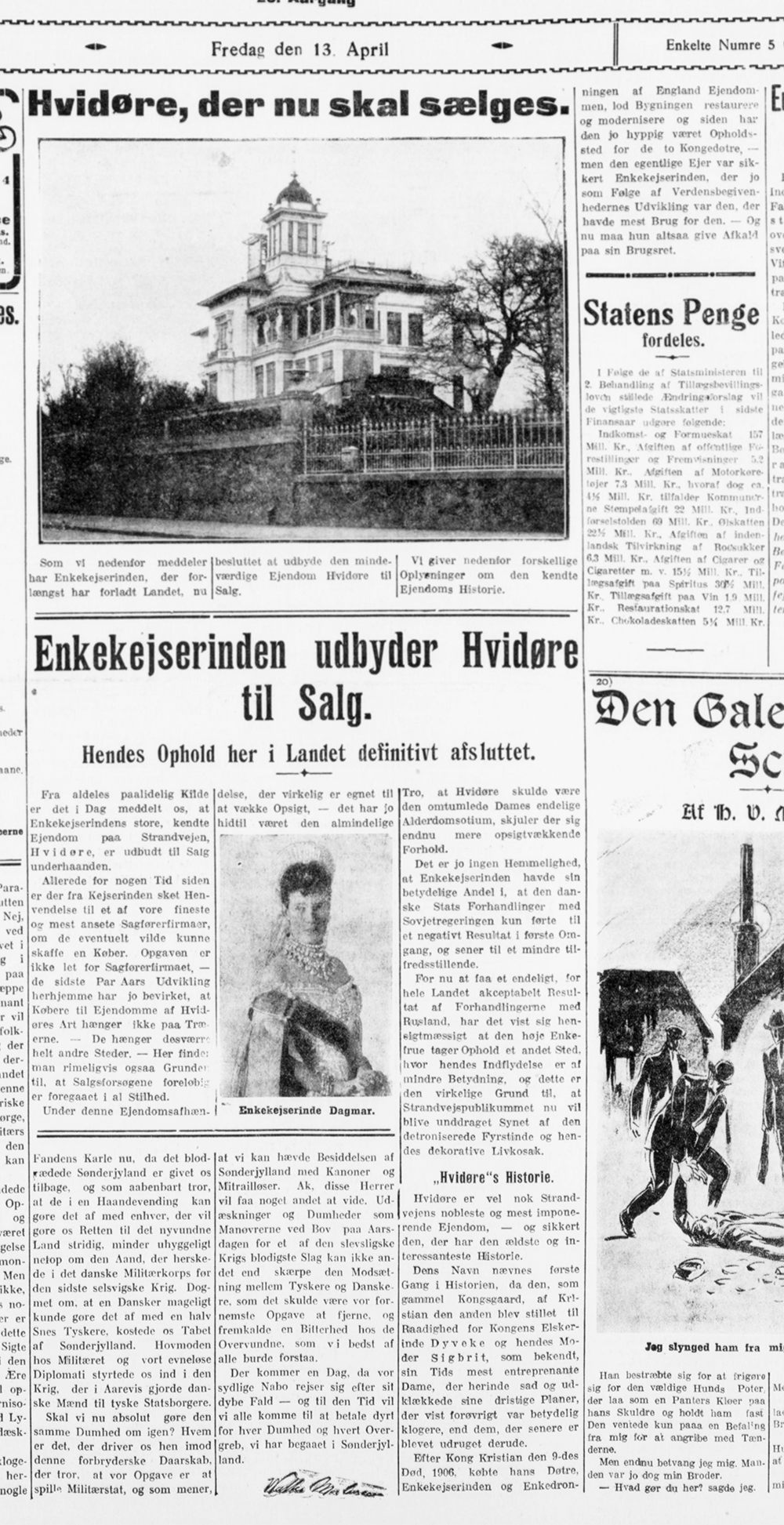
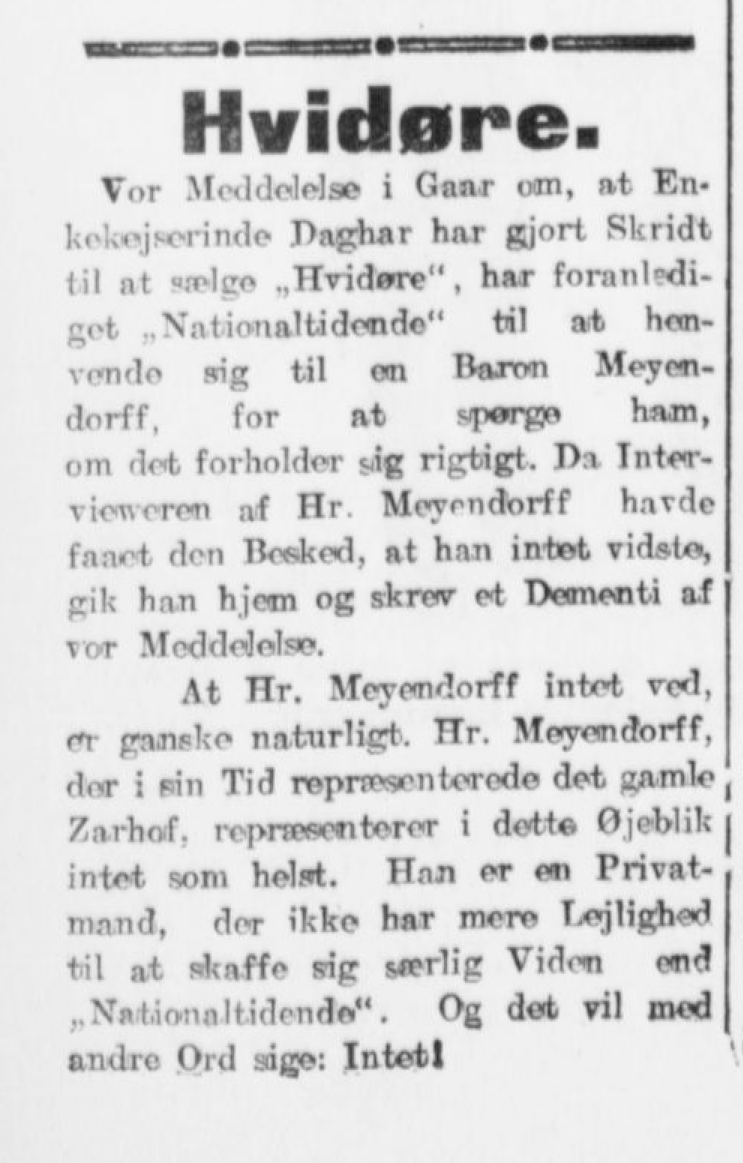
1923 articles about the Dowager Empress heading back to Hvidøre, considering selling it, denying that a sale was considered.
Where I took the photo from.
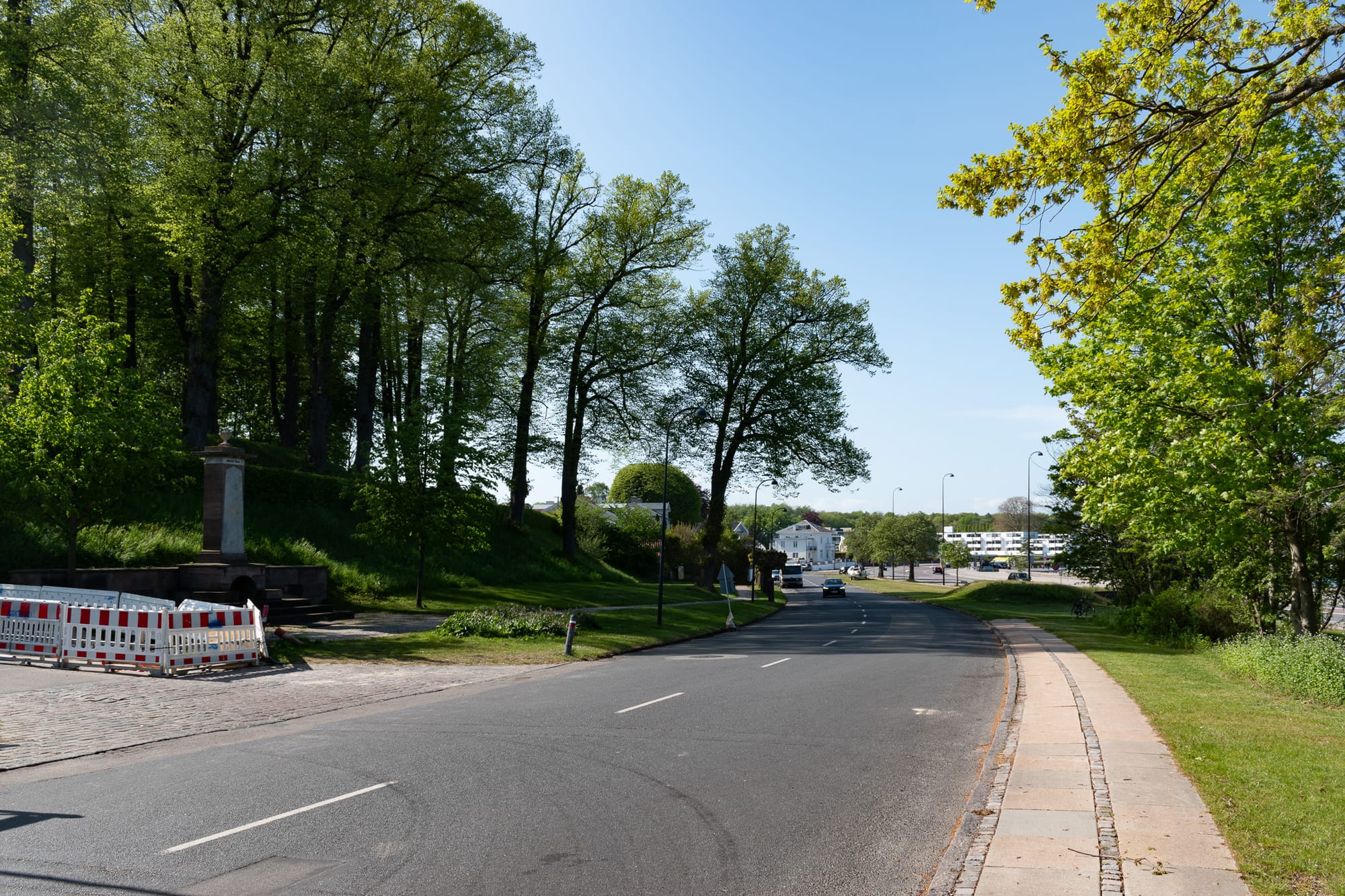
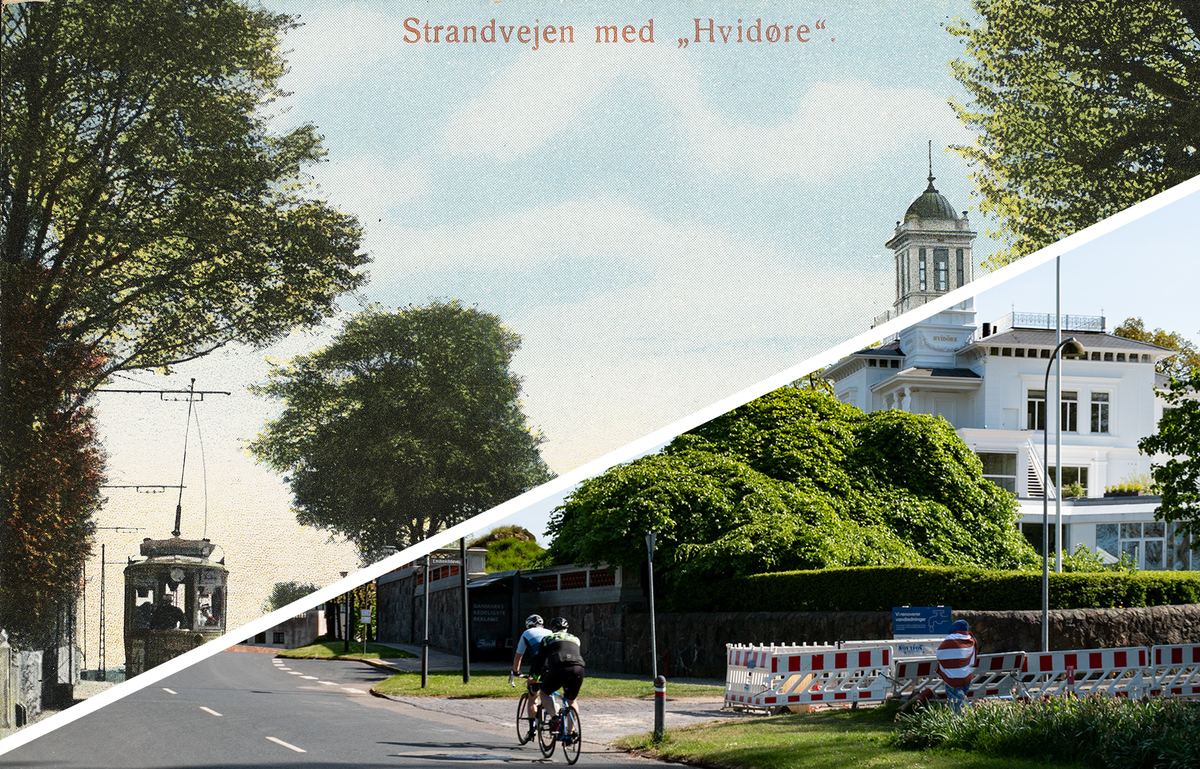



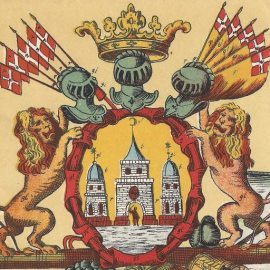



Member discussion: